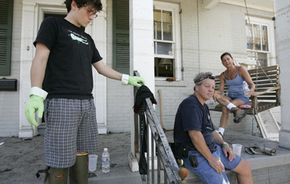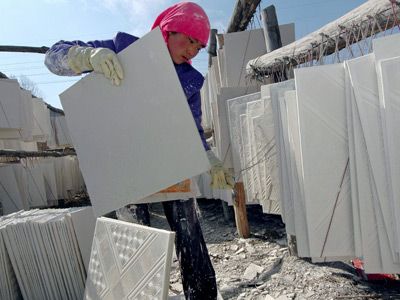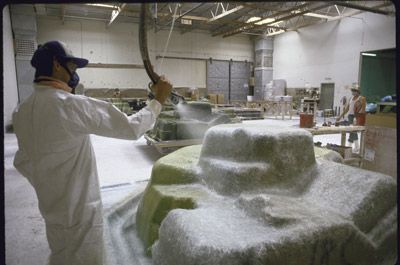In January 1993, an infant in the Cleveland, Ohio area -- the first of 27 -- suffered acute pulmonary hemorrhaging. The children bled from their airways, their lungs infected with some unknown illness. One of the children died. An investigation into the cause of this terrible outbreak found that each of the homes where the sick infants lived sustained serious water damage. Within these houses, the greenish-black fungi Stachybotrys chartarum (S. chartarum) was discovered. It appeared the children's infections were caused by toxic mold.
The Cuyahoga County coroner re-examined all of the infants in the area who had died between 1993 and 1995, including those thought to have died from SIDS (sudden infant death syndrome). Six children were found to have lung tissue showing signs of pulmonary hemorrhage. It has yet to be proven definitively that the mold caused the deaths of the infants. But the question looms large enough that medical and public health professionals around the world began to wonder, if this mold is a health risk, just how extensive could the problem be?
Advertisement
While the term "toxic mold" is catchy and alarming, it's not the mold itself that's toxic -- it's the spores the fungi produce. S. chartarum and other molds like Fusarium and Trichoderma release spores that include dangerous substances called mycotoxins. When they become airborne, you can inhale them. You can also absorb them through your skin and intestines. And in addition to the toxic spores, these molds also produce gases which release mycotoxins.
These toxic spores are believed to cause skin irritations as well as lung inflammation and may suppress the body's immune system. It has also been claimed that toxic mold is responsible for memory loss and brain damage. Although a court ruled in favor of such a claim, medical science has yet to prove the link [source: White].
Mycotoxins may damage human health through cytotoxicity -- the spores kill off living cells to cut down on competition for resources. So the cells in your body come under attack when toxic spores like those found on the surface of S. chartarum invade your body. This could have myriad effects on your health.
There has been no definitive proof that the spores from mold like S. chartarum and other molds create serious health hazards in people. While mycotoxins possess properties like cytotoxicity and have been shown to create negative impacts on living tissues in laboratories, research into their actual effects on human health is relatively new. But investigation into how mycotoxins work has become a high priority.
Prompted by the deaths of the infants in Cleveland in the early '90s, organizations like the national Centers for Disease Control and Prevention and the Environmental Protection Agency have begun to compile evidence and create databases on toxic mold and how to fight it. Read about how to protect your home from mold -- toxic or otherwise -- on the next page.
Advertisement



